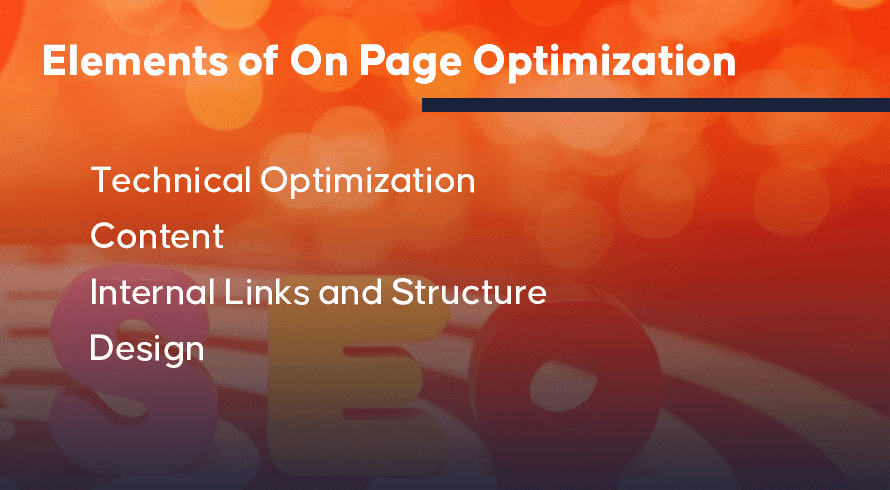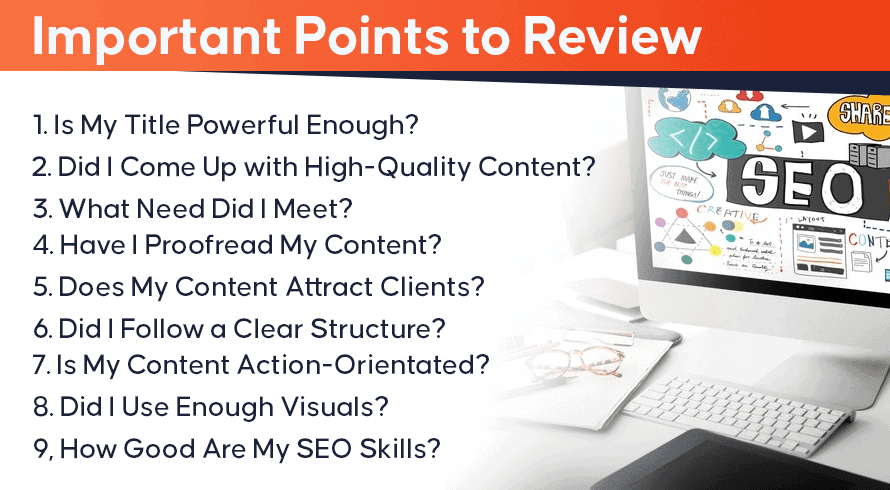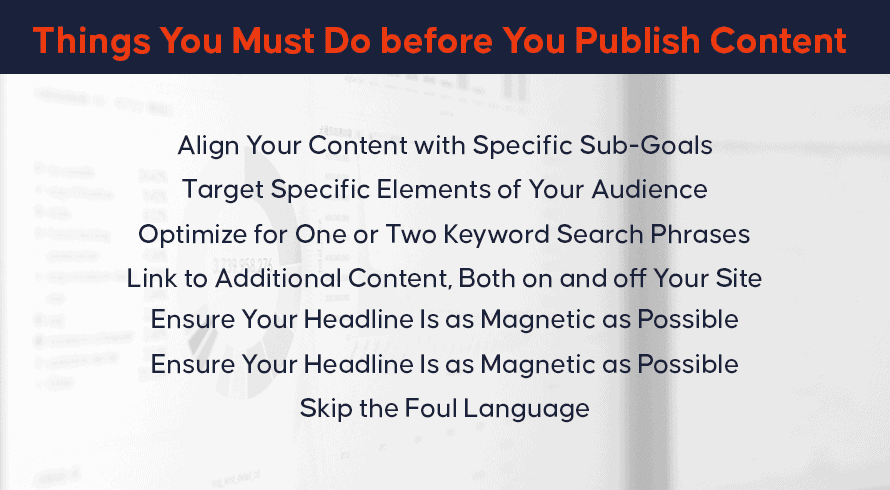Inquivix HQ
1-903, 18 Eonju-ro 146-gil,
Gangnam-gu, Seoul, Korea
06057

There are several factors that affect your website ranking through on-page SEO. This article mainly provides the basics of on-page SEO, which includes factors like meta tags, keywords optimization, and page speed. By including these factors in your pages you can increase your search engine ranking.
On-page SEO means optimizing the web pages to rank better in search engines. It is the practice of optimizing a website to rank higher in search results, therefore increasing web traffic. There are many benefits of on-page SEO, including increased web traffic, higher click-through rates, and increased conversion rates.
What Is On Page Analysis?
On-page SEO optimization is the process of making your web pages as search engine friendly as possible. This includes optimizing your page titles, meta descriptions, header tags, images, and other elements that influence how your pages rank in search engines. On-page optimization is the practice of optimizing a website to rank better in SERPs, and therefore increase web traffic.
Elements of On Page Optimization
There are many different elements that you can optimize on your web pages in order to improve your search visibility. Some of the most important elements include the following:

Technical Optimization
This includes optimizing your website for speed and performance, as well as ensuring that your website is properly structured and that your internal links are working correctly.
Content
This includes the content of your pages, quality, relevance, as well as how you use keywords and optimize your images.
Internal Links and Structure
This includes the way you structure your website and how you use internal links to help search engines find your pages.
Design
The layout and design of your pages, and how easy they are to read and navigate help in optimizing web pages. All of these elements play a role in how well your web pages rank in search engines. By optimizing each of these elements, you can improve your search engine ranking and increase web traffic to your website.
Important Points to Review
When you are conducting an on-page SEO analysis it is important to check your content for a few common mistakes. Ask yourself the following nine questions.
#1 Is My Title Powerful Enough?
Your title should be clear and descriptive, but it should not be too long or include keywords that aren’t relevant. Your page title should also be different from the titles of other web pages on your site. Make sure to include your target keyword in the title.
#2 Did I Come Up with High-Quality Content?
You want to ensure that your articles are well-written, unique, and filled with helpful information. You should also use keywords throughout your content, but don’t overuse them or your articles will be penalized by Google.
#3 What Need Did I Meet?
Make sure that your content is relevant to your target audience and provides them with helpful information. Don’t try to cram in too many keywords or you will lose the reader’s interest.
#4 Have I Proofread My Content?
Proofreading is important to ensure that your content is error-free and easy to read. Typos and errors can negatively affect your search engine ranking.
#5 Does My Content Attract Clients?
Your content should be well written and informative, and it should also be designed to attract new clients and customers. Use Google analytics tools to learn more about the performance of your content. This knowledge will help you to generate more traffic to your website.

#6 Did I Follow a Clear Structure?
A clear and logical structure is important for helping search engines understand your content, and it will also help readers navigate your site and find the information they are looking for. This extends to the URL structure as well.
#7 Is My Content Action-Orientated?
It’s important to include calls to action throughout your web pages so that users know what you want them to do next. If you don’t add a call to action, then users might not be sure where they should go or what they should do next.
#8 Did I Use Enough Visuals?
Visuals are important in online marketing because many people prefer to learn from visual aids rather than from written content. You should try using plenty of images, infographics, and videos to help explain your points.
#9 How Good Are My SEO Skills?
It’s important to ensure that your website is properly optimized for search engines so that you can get the most traffic possible. You should use keywords throughout your site, optimize your images, and make use of other SEO techniques. Use SEO tools like a reliable SEO checker to help you. There are paid and free SEO checker tools available.
By asking yourself these questions, you can improve your on-page SEO and see better results in the search engine results pages.
Things You Must Do before You Publish Content
On-page SEO is important to help your website rank better in Google and other search engines, but it is only part of the story. You should also consider taking these steps before publishing content.

Align Your Content with Specific Sub-Goals
It can be confusing for a search engine to understand your content if you don’t provide them with clear sub-goals. Each page should have one primary goal, and all of the content on that page should be designed to fulfill that goal.
Target Specific Elements of Your Audience
Your target audience will vary based on your industry and topic, so it’s important to narrow down your focus. You should try to create content specifically for people in your target demographic instead of trying to appeal to everyone who might visit your site.
Optimize for One or Two Keyword Search Phrases
You want to help search engines find the relevant pages on your website, so it’s important to use relevant keywords throughout your site. You should also use these keywords in your page titles and meta descriptions to help search engines understand what your content is about.
Link to Additional Content, Both on and off Your Site
You want users to stay on your site for as long as possible, so it’s a good idea to link to relevant and helpful information to build trust. You can include internal and external links within your content that direct readers to related pages or posts on your website or others. Including links to other authoritative sites should be done carefully because you don’t want them to leave your site.
Ensure Your Headline Is as Magnetic as Possible
An interesting headline can attract the wandering eye of the reader. So, be creative and write a headline that is relevant, informative, and attractive while keeping it balanced.
Skip the Foul Language
Languages like English have complex rules about sentence structure and word choice, and it can be easy to accidentally introduce grammatical errors or misspellings. If you make a mistake, it is essential to fix it right away before your visitors leave the page because of it. You need to use appropriate vocabulary to suit the tone of your content.

Format Content to Facilitate Readability
You should write concisely and edit your content carefully before posting. You should also break up longer paragraphs into smaller ones that are easier for people to read on their screens. This will improve engagement rates and keep visitors around for longer periods of time.
Include an Image
Visuals are important in web marketing because they communicate ideas more efficiently than text alone, so you should try including images whenever possible. Make sure that each image has alt text so that search engines understand its relevance, and avoid using copyrighted images or images of people without their consent.
Communicate in a Voice That’s Consistent with Your Other Content
Your tone should be appropriate for your business and target audience, so you should avoid using humor on corporate websites. Using the same voice across all of your content will help users identify your brand with that voice.
Integrate Corporate Branding
Branding is important because it provides an identity for your organization, and that can help improve loyalty and conversion rates by associating your products and services with that identity. You should ensure that any visual branding elements are consistent throughout all of your web pages and content types.
Review Your Copy for Grammatical and Spelling Mistakes
It’s important to proofread your content before you publish it because mistakes can reflect poorly on your brand. You can use online tools like Grammarly to help you find and fix common errors.
Incorporate a Call to Action
If you want users to take a specific action, you should include a call to action in your content. This could be as simple as asking them to sign up for your email list or download a white paper, or it could be more complex like purchasing a product or service.
Engage Readers
You want your readers to feel like they’re a part of the conversation, so you should try to prompt them for feedback and responses. You can do this by using interactive elements like polls and surveys, encouraging comments with a blog post, or inviting them to chat directly.
Conclusion
Each of these factors can be used to improve your web page’s ranking and performance on search engines, so before you publish any new content, make sure that you review these guidelines and ensure they’ve been considered. By following the tips discussed in this article, you should be able to increase your organic traffic and improve conversion rates.
